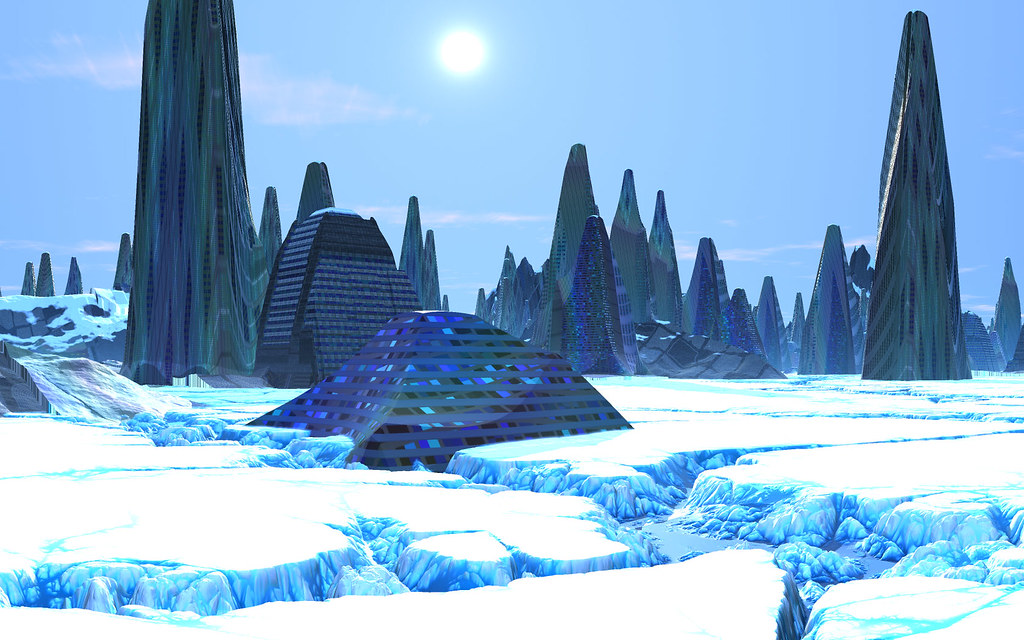Climate explained: what is an ice age and how often do they happen?
Ice-free periods over the past 500 million years correspond with average global temperatures of over 20 degree Celsius.There is no official minimum period of time for an ice age.

- Country:
- United Kingdom
What is an ice age? Do they have to last a certain amount of time to count, how did they vary and how many ice ages has the Earth experienced? As with many definitions of natural phenomena, a precise definition of an ice age isn’t straightforward.
Ice ages form during protracted periods of a relatively cooler Earth. A definition must include the condition that the Earth is sufficiently cool for permanent ice formation.
The second part of an ice age definition is the result of protracted cooling. Ice ages lead to the development of continental ice sheets in the northern and southern hemispheres, and the growth of glaciers in mountainous parts of the world, such as the Himalayas, Alps, Southern Alps, and the Andes.
A third part of the definition involves time. For an ice age to be recorded as significant, it must last for a geologically significant amount of time.
If we bring all these factors together, then an ice age occurs during times of protracted lower temperatures, resulting in significant areas covered in ice for millions to tens or even hundreds of millions of years.
Variations within an ice age Ice ages are not uniformly cold. There can be colder and warmer periods during the overall ice-age period. Colder periods lead to more extensive areas of continental ice sheets, valley glaciers, and sea ice, while warmer periods lead to reduced areas of the ice.
Cold ice-age periods on Earth are called “stadials”, while warmer parts of an ice age are known as “inter-stadials”. An ice age ends when the Earth warms enough for the ice cover to recede, or disappear completely.
The regions on the fringes of extensive ice sheets and glaciers experience a cooling to the point that a consistently cold environment forms. Usually, the ground is frozen for much of the year, growing seasons are short, and only the hardiest of flora and fauna survive. The Russian tundra is an example of this landscape.
These environments are called “periglacial” and occupy areas between relatively warmer ice-free regions and permanent ice fields.
Ice ages and the Earth’s climate Ice ages change the Earth’s climatic belts. Temperate and tropical zones become restricted to the lower equatorial latitudes.
A question that follows on from the definition of an ice age is: how cold does Earth have to become to produce one? Earth’s average global temperature today is around 16 degrees Celsius.
Analysis of proxy temperature data (e.g. from the modeling of deep-ocean sediment isotope compositions) over the past 500 million years of Earth’s history indicates that average global temperatures have varied between around -10 degrees Celsius and +30 degrees Celsius. During the most recent glacial maximum (stadial, 23,000 to 11,000 years ago), the average global temperature was about 8 degrees Celsius, with polar regions experiencing average temperatures of -2 degrees Celsius. Ice-free periods over the past 500 million years correspond with average global temperatures of over 20 degrees Celsius.
There is no official minimum time for an ice age. Some colder periods in historical times are termed little ice ages, including between the 13th and 18th centuries. This period was characterized by longer and colder winters, and shorter, cooler summers. Rivers regularly froze over in winter in western Europe. The stunning artwork of the Dutch painter Hendrick Avercamp (1585–1634 CE) documents aspects of this period.
How many ice ages has the Earth experienced? Geologists agree Earth has gone through six major global ice ages. The oldest ice age occurred some 2,900-2,780 million years ago. The most recent ice age is the one we are currently experiencing, the late Cainozoic-Quaternary Ice Age, which began around 34 million years ago with the glaciation of Antarctica.
Between these two ice-age periods, other ice ages occurred at 2,400-2,100, 715-550, 450-420, and 360-260 million years ago. These six major ice ages lasted between 300 and 30 million years respectively.
Ice ages vary in length of time, extent, and extremes of temperature. The most extensive ice age was the period referred to as “Snowball Earth” when geologists think ice reached the equator, some 700 million years ago. At other times within ice ages (such as today), ice is mainly restricted to polar regions and higher mountain chains. But at its greatest extent, the present glacial period produced ice sheets as far south as the southern Great Lakes in the US and the river Thames in the UK. Mountain glaciers also extended much further and sea levels were some 120 meters lower than today.
Many factors cause ice ages. The main ones include variations in Earth’s orbit, known as Milankovitch cycles, reductions in solar energy emissions, lower atmospheric greenhouse gas concentrations, variations in ocean currents, tectonic activity, continental configurations, mountain building periods, and global volcanism.
(This story has not been edited by Devdiscourse staff and is auto-generated from a syndicated feed.)
ALSO READ
Nepal's Sagarmatha Sambad: Leading the Charge Against Climate Change in the Himalayas
Dutch Parliament Pushes for Sovereign Cloud Solutions
Dutch Parliament Enacts Stronger Anti-Espionage Laws
Rajnath Singh and Ruben Berkelmans Strengthen Indo-Dutch Defence Ties
Dutch Parliament Seeks Independence from U.S. Software Giants










